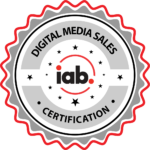Geo-fencing is an innovative digital marketing strategy that has gained significant traction in recent years.
Businesses can target potential customers with relevant ads and messages by creating virtual boundaries around specific geographic areas and across devices.
In this article, we will explore the concept of geo-fencing, its benefits, and how small to medium-sized businesses can effectively integrate it into their marketing strategies.
What is Geo-Fencing?
Geo-fencing is a location-based service that uses GPS, FRID, Wi-Fi, or cellular data to trigger pre-programmed actions when a mobile device enters or exits a designated area.
This could be a specific radius around a business, a competitor’s location, or any relevant site. Using geo-fencing you can target the 91% of people who turn to their phones for ideas while in the middle of tasks. The primary purpose of geo-fencing is to deliver targeted, timely content to users based on their location, according to Semrush.
Benefits of Geo-Fencing
Geo-fencing offers numerous advantages for businesses looking to enhance their marketing efforts across devices.
- Increased Engagement: By sending targeted messages to users when they are near your location, you can increase the likelihood of engagement and drive foot traffic to your store.
- Personalized Marketing: Geo-fencing allows for highly personalized marketing campaigns, as messages can be tailored to the specific preferences and behaviors of users in different locations
- Improved ROI: Geo-fencing can improve the return on investment (ROI) of your marketing campaigns by targeting users who are more likely to visit your business.
- Competitive Advantage: Geo-fencing can give you an edge by targeting customers near your competitors and offering them incentives to visit your business instead.
How Geo-Fencing Works
The process of geo-fencing involves several key steps.
Here’s how geo-fencing works, according to Salesforce.
- Define Your Target Area: Determine the geographic boundaries where you want to target potential customers. This could be around your business location, a competitor’s store, or an event venue.
- Set Up Virtual Boundaries: Use geo-fencing software to create virtual perimeters around your target areas. These boundaries can be adjusted based on the specific needs of your campaign.
- Trigger Actions: Program specific actions to be triggered when users enter or exit the geo-fenced area. This could include sending push notifications, displaying ads, or tracking user behavior.
- Analyze Data: Collect and analyze data on user interactions within the geo-fenced area to optimize future marketing efforts.
Implementing Geo-Fencing in Your Marketing Strategy
Here are some practical tips for integrating geo-fencing into your marketing strategy.
- Target Specific Events or Locations: Use geo-fencing to target users attending specific events or visiting certain locations. For example, a restaurant could target attendees at nearby concerts or sports events.
- Offer Incentives: Provide special offers or discounts to users who enter your geo-fenced area. This can entice potential customers to visit your business.
- Personalize Content: Tailor your messages to users’ specific preferences and behaviors in different locations. Personalized content is more likely to resonate with your audience and drive engagement.
- Monitor Competitors: Set up geo-fencing around your competitors’ locations to target their customers with compelling offers to visit your business instead.
Geo-Fencing Challenges and Considerations
While geo-fencing offers many benefits, there are also some challenges to consider.
- Privacy Concerns: Users may be wary of location-based tracking and targeted ads. It’s essential to be transparent about data collection practices and ensure user privacy.
- Battery Usage: Continuous location tracking can drain device batteries, which may lead to user dissatisfaction. Turning location tracking off can save battery usage.
- Data Accuracy: Ensure the accuracy of your location data to avoid targeting users outside your intended areas. Inaccurate data can lead to ineffective campaigns and wasted resources.
Adding Geo-Fencing to Your Digital Marketing Strategy
Geo-fencing is a powerful tool to help small to medium-sized businesses enhance their marketing efforts and drive customer engagement.
By targeting users based on their location, businesses can deliver personalized, timely content that resonates with their audience. For more information on integrating geo-fencing into your marketing strategy, fill out the form below.























